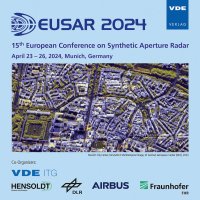Overview of NASA'S calibration and validation activities for the NISAR mission
Conference: EUSAR 2024 - 15th European Conference on Synthetic Aperture Radar
04/23/2024 - 04/26/2024 at Munich, Germany
Proceedings: EUSAR 2024
Pages: 3Language: englishTyp: PDF
Authors:
Chapman, Bruce; Rosen, Paul
Abstract:
The NASA ISRO SAR mission (NISAR) will be a U.S./Indian SAR mission for studying hazards and global environmental change. Operating at both L-band and S-band wavelengths, NISAR will acquire data globally to address three mission science themes: The Earth's surface and interior; the Earth's cryosphere; and the Earth's ecosystems. NISAR will be left-looking in order to more fully cover Antarctica and also to provide viewing geometries over tectonically active regions complementary to existing and future right looking SAR missions. The L-band SAR will have several modes up to and including fully polarimetric modes with most modes supporting a split spectrum to facilitate the correction of ionospheric delays; In addition to the calibration of the sensor data, NISAR will have 13 science measurement requirements that will be validated after its launch. The NISAR instrument is now being readied for launch by ISRO in early 2024. In preparation for launch, the project has developed a comprehensive global observation plan, acquiring L-band SAR data every 12-day repeat orbit for every ascending and descending orbit over all of the Earth's land surface during the nominal 3-year mission duration. The S-band SAR has constraints that prohibit global coverage at this cadence, instead the mission will collect S-band SAR data over globally distributed Cal/Val sites, large sections of Antarctica, coastal areas, sea ice regions, and over India and surrounding regions. Most of the S-band observations will be collected simultaneously with L-band.


